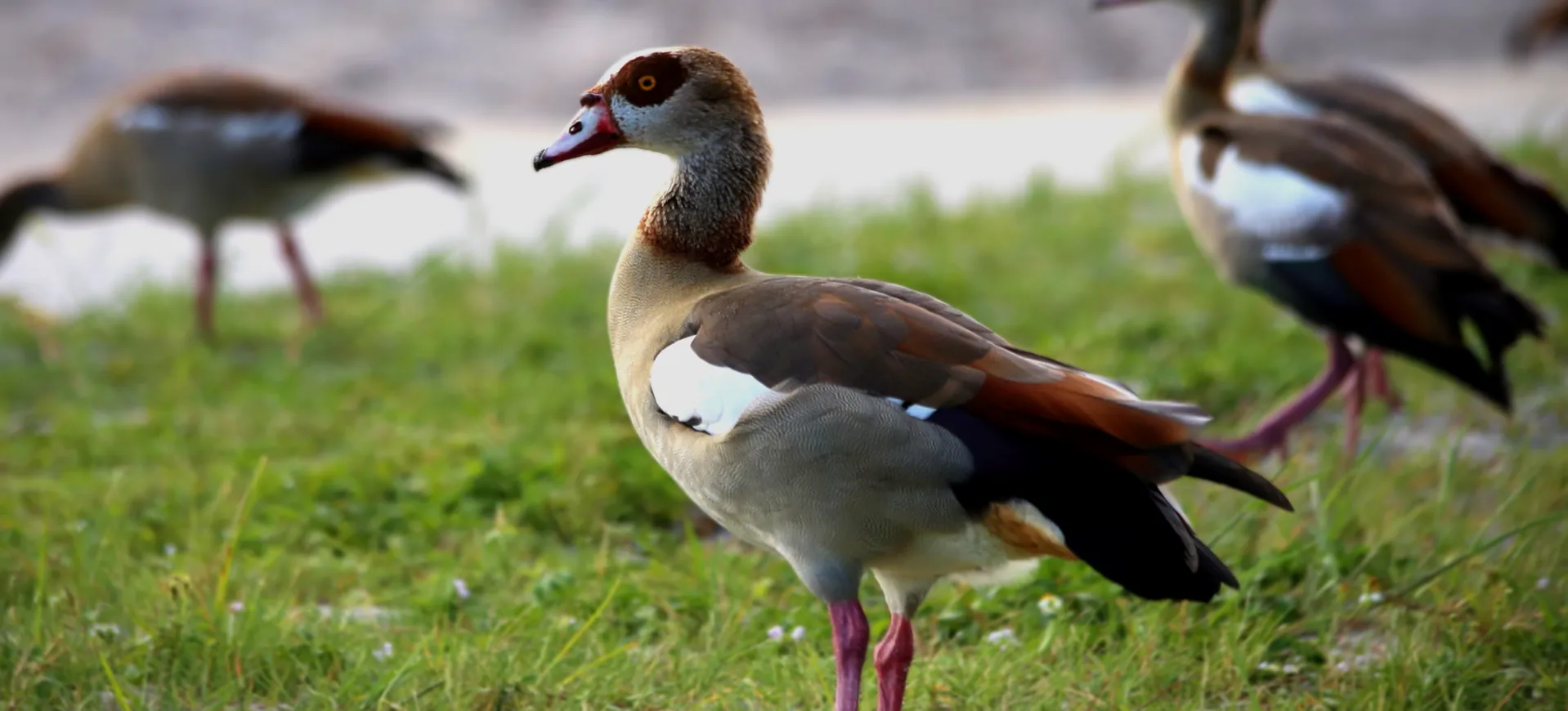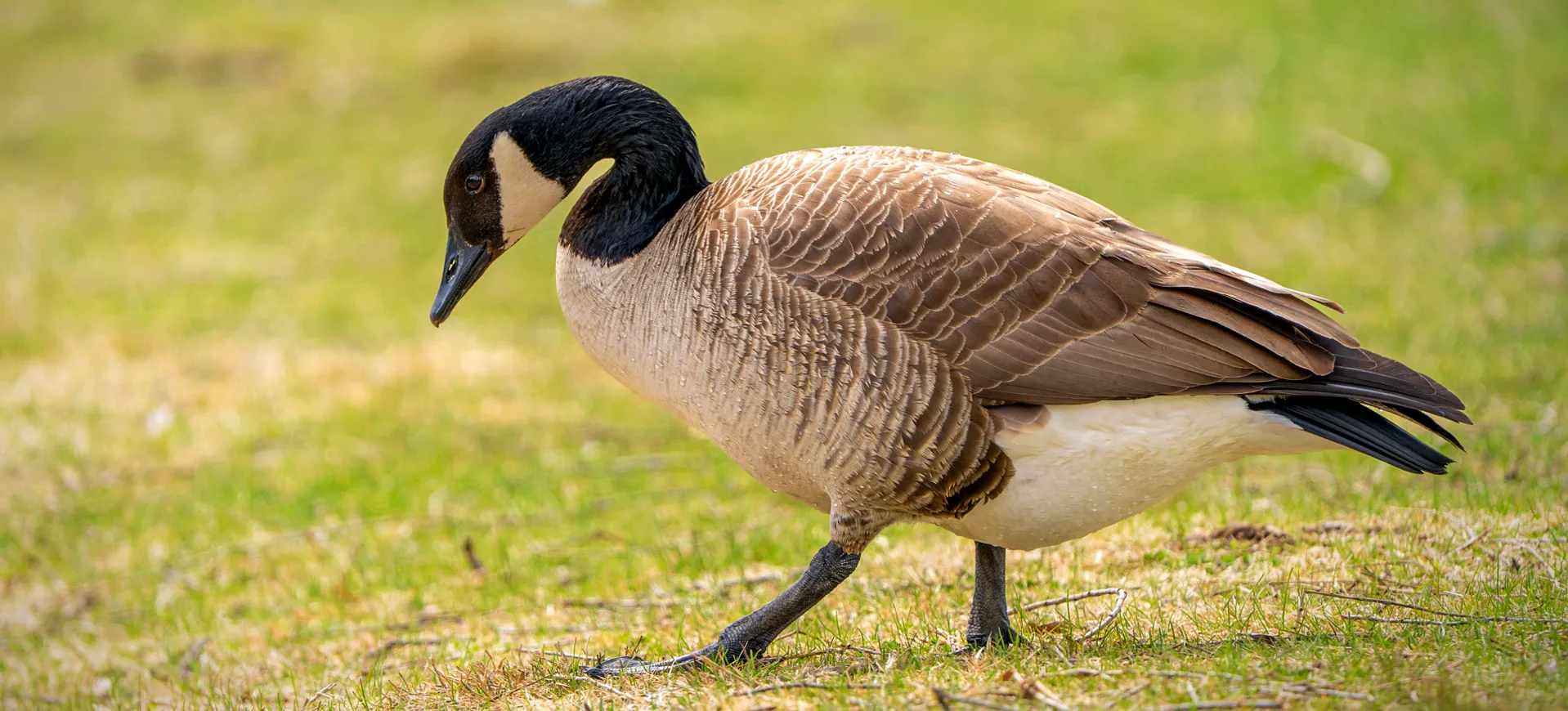Overview
The Redhead (Aythya americana) is a striking medium-sized diving duck known for the male’s distinctive cinnamon-red head and bright yellow eyes. Females are more subtly colored with brownish bodies and a bluish bill with a black tip, but they share the same bright eyes as the males. These ducks are often seen in large flocks, especially during migration and winter, frequenting lakes, marshes, and coastal bays across North America.
Redheads are known for their agility both underwater and in the air. When available, they dive to feed, primarily on aquatic plants, mollusks, and small invertebrates. They are fast and direct, often flying in large, tightly packed flocks. Their migration is a significant event for many birdwatchers as they move from their northern breeding grounds to more temperate wintering areas.
During the breeding season, Redheads are often found in the prairie pothole region of North America, where they nest in dense wetland vegetation. They are unique among ducks for their parasitic laying behavior; females often lay eggs in the nests of other Redheads or duck species. This strategy can increase their reproductive success, especially when suitable nesting sites are scarce.
Taxonomy
Kingdom
Phylum
Class
Order
Family
Genus
Species
Type
Physical Description:
The Redhead is a medium-sized diving duck with a sleek profile and a rounded head. Adult males are most recognizable by their bright cinnamon-red heads, black breasts, and grayish bodies. The bill is blue with a black tip, and the eyes are a striking yellow. In contrast, the female Redhead is mottled brown overall, providing excellent camouflage among the reeds and vegetation of their wetland habitats.
Both sexes have a distinctive sloping forehead that meets the bill at a steep angle, a characteristic of the Aythya genus. They measure about 18.5 to 22 inches long and have a wingspan of approximately 33 inches. In flight, Redheads show rapid wingbeats and often fly in large flocks that can form impressive patterns in the sky. Their legs and feet are set back on their bodies, aiding in diving but making them somewhat awkward on land.

Lifespan: Wild: ~10 Years || Captivity: ~20 Years

Weight: Male: 2.4-2.9 lbs (1.1-1.3 kg) || Female: 2.0-2.4 lbs (0.9-1.1 kg)

Length: Male & Female: 18.5-22 inches (47-56 cm)

Wingspan: Male & Female: 31-35 inches (79-89 cm)

Top Speed: 50 mph (80 km/h) in flight
Characteristic:
Native Habitat:
Redheads breed predominantly in the prairie pothole region of North America, an area characterized by thousands of shallow wetlands that provide ideal nesting and feeding habitats. They favor large, shallow marshes and wetlands with abundant emergent vegetation for nesting and brood-rearing. During the breeding season, they are dispersed across these wetlands but tend to concentrate in the most productive areas.
In the winter, Redheads migrate to the southern United States and the northern parts of Mexico. They are commonly found in coastal bays, estuaries, and inland freshwater lakes, forming large flocks. These wintering grounds provide crucial foraging and resting habitat for thousands of migrating Redheads and other waterfowl.
Climate Zones:
Biomes:
Biogeographical Realms:
Continents:
Diet:
Diet & Feeding Habits:
Redheads are primarily herbivores, with a diet consisting mostly of aquatic plants. They feed by diving and upending, often consuming seeds, leaves, and tubers of pondweeds, wild rice, wigeon grass, and other vegetation. During certain times of the year, especially during the breeding season, they consume mollusks, aquatic insects, and small fish, providing them with additional protein.
These ducks are opportunistic feeders and will adjust their diet based on what is available in their current habitat. This adaptability allows them to thrive in a variety of wetland environments. In wintering areas and migration stopovers, they feed in agricultural fields, consuming waste grains and other crop remnants.
Mating Behavior:
Mating Description:
Redheads are seasonally monogamous, forming pairs each year during the winter and early spring. Courtship displays are elaborate and involve several characteristic behaviors, such as head-throwing, bill-dipping, and other movements designed to show off the male’s bright plumage and vigor. Once paired, the couple migrates to the breeding grounds together.
Nesting typically occurs in dense marsh vegetation, where the female builds a bowl-shaped nest and lines it down. An unusual aspect of Redhead reproduction is their brood parasitism; females often lay eggs in the nests of other Redheads or duck species. This can increase their reproductive output, especially when suitable nesting sites are limited. Females incubate the eggs for about 24-29 days, and the ducklings are precocial and able to leave the nest within a day or two after hatching.
Reproduction Season:
Birth Type:
Pregnancy Duration:
Female Name:
Male Name:
Baby Name:
Social Structure Description:
Outside the breeding season, Redheads are highly social and often form large flocks, sometimes consisting of thousands of individuals. These flocks can also include other duck species, creating a diverse and dynamic group. The sight of these large congregations, often in stunning natural settings, is a remarkable spectacle for birdwatchers and nature enthusiasts alike.
During the breeding season, they become more territorial, with pairs defending their nesting area from intruders. Their social behavior is complex and includes a range of vocalizations and physical displays used for communication and mating. These behaviors are crucial for establishing pair bonds, asserting dominance, and ensuring reproductive success in competitive wetland environments.
Groups:
Conservation Status:
Population Trend:
Redhead populations fluctuate due to changes in their wetland habitats, hunting pressures, and other environmental factors. While they are currently listed as Least Concern by the IUCN, their numbers have declined in some areas, particularly where wetland habitats have been lost or degraded. Conservation initiatives focused on wetland protection and restoration are crucial for maintaining healthy populations.
These ducks are also popular among hunters, and regulated hunting is considered sustainable in many areas. However, monitoring and research are essential to ensure that hunting pressures do not lead to population declines. Climate change and associated changes in wetland ecosystems represent a potential long-term threat to Redhead populations.
Population Threats:
The primary threats to Redheads include habitat loss and degradation, especially the draining and filling wetlands for agriculture and development. Pollution and contamination of water bodies can also impact their food sources and overall health. In some areas, they face competition for nesting sites and food resources from increasing populations of other waterfowl species.
Climate change poses a significant long-term threat, as it can lead to changes in wetland ecosystems and water availability. This could impact their breeding and wintering habitats, affecting their reproductive success and survival. Hunting is a threat in some areas but is generally well-regulated and sustainable.
Conservation Efforts:
Conservation efforts for Redheads focus primarily on protecting and restoring their wetland habitats. This includes initiatives to preserve prairie potholes, other critical breeding areas, and coastal and inland wetlands used during migration and wintering. Many of these efforts are part of broader waterfowl conservation programs that benefit multiple species.
Regulations on hunting and efforts to ensure sustainable harvests are also important for maintaining healthy populations. Research and monitoring programs help track population trends and inform management decisions. In some areas, habitat management, including the control of invasive species and restoration of native vegetation, is helping to improve the quality of their habitats.
Additional Resources:
Fun Facts
- The Redhead is one of the few duck species known to engage in brood parasitism regularly.
- They are excellent divers and can feed in water several meters deep, submerging for up to a minute.
- Redhead ducks are among the fastest flyers among duck species, reaching up to 50 mph.
- Their bright yellow eyes are distinctive and can help birdwatchers distinguish them from similar species.
- Redheads use a variety of habitats throughout the year, showing remarkable adaptability to different environments.
- The male’s vibrant Redhead fades to a duller color during the non-breeding season, making them less conspicuous.
- During the winter, they have been known to form mixed flocks with Canvasbacks, another diving duck species.
- The population of Redheads is a popular indicator species for the health of wetland ecosystems in North America.
- They have various vocalizations used in different social contexts, from soft cooing sounds to more loud and raucous calls.
- Conservation efforts focused on Redheads also benefit many other species that share their wetland habitats.



















































































